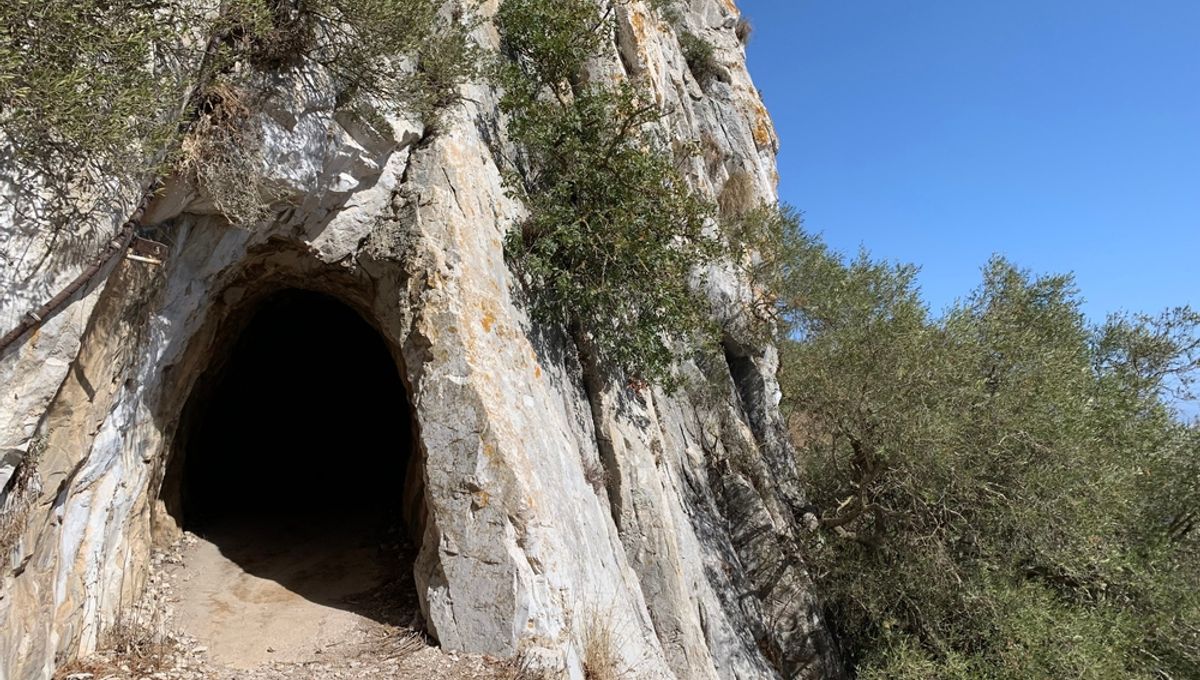
On the rocky shores of Gibraltar, archaeologists have discovered a new chamber in a cave system that was a hangout of some of Europe’s last surviving Neanderthals. Among the markings and bones discovered in the newly found chamber, the team hopes to uncover more insights into the culture and customs of our mysterious sibling species.
The new chamber was discovered within the Gorham’s Cave Complex World Heritage Site, a sea-level cave in Gibraltar, a British overseas territory nestled on the southern tip of Spain. Thought to be one of the last known hideouts of the Neanderthals in Europe, the cave has been widely explored since it was first excavated in 1997. Last month, however, archaeologists from the Gibraltar National Museum discovered a new 13-meter (42-foot) deep chamber at the back of the cave that had been sealed by sediment for at least 40,000 years.
As well as the bones of a lynx, hyena, and griffon vulture, an initial analysis of the chamber revealed the presence of scratch marks on the walls, most likely made by an unidentified carnivore. The most convincing evidence that this part of the cave was used by Neandtherals is the shell of a large whelk, an edible type of sea snail, that must have been transported up to the chamber due to its distance from the waters.
Neanderthals (Homo neanderthalensis) were a human species that emerged over 400,000 years ago — long before us (Homo Sapiens) — across Eurasia until they slipped into extinction around 40,000 years ago. However, their legacy still lives on; Neanderthal genes can be found in every modern human population due to prolific interbreeding. The percentage of Neanderthal DNA in modern humans is just 0.3 percent in African populations but is about 1 to 3 percent in people of European or Asian ancestry.
In the past, Neanderthals were often portrayed as H. Sapiens’ heavy-browed caveman relations, assumed to lack the cognitive abilities to develop complex cultures. However, a number of discoveries in recent decades have shown that our extinct cousins were perhaps on a comparable level to us, cognitively speaking. The growing picture we have is of Neanderthals as complex people who created art, buried their dead, decorated their bodies with jewelry, cared for the disabled, and had already discovered penicillin.
Through further work at this cave, it’s possible that archaeologists might be able to shed into how this mysterious species lived.
“These are exciting finds that open a new chapter of our rich history. Knowing Vanguard cave well, I often wondered what might lie behind the sands. Now we are beginning to get a first glimpse,” Dr John Cortes, Gibraltar’s Minister for the Environment, Sustainability, Climate Change, and Education, said in a statement.
A version of this article first appeared in October 2021.
Source Link: Cave Chamber Closed For 40,000 Years Found In Neanderthals' Last Hangout